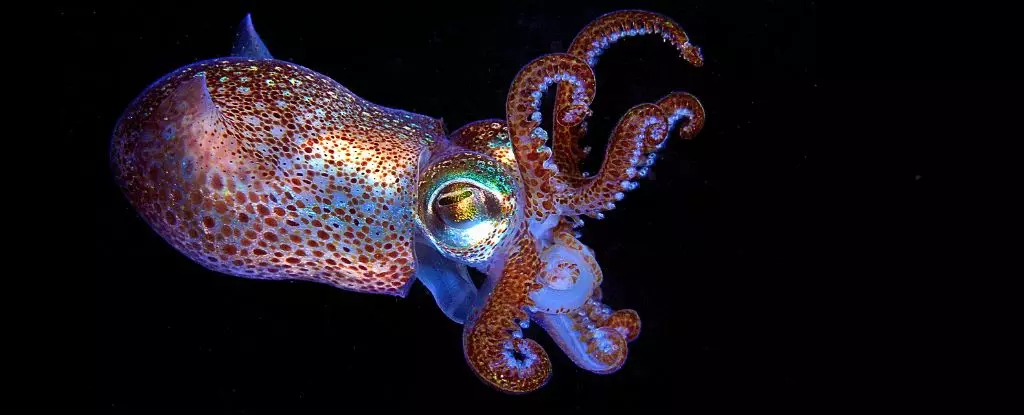In a fascinating twist of nature, researchers have demonstrated that the vibrant color-matching capabilities of cephalopods, particularly squids, are not just for show but may also harness solar energy. This discovery, spearheaded by biochemist Taehwan Kim and his team at Northeastern University, unveils an ingenious interface between biology and technology, revealing how these remarkable creatures transform environmental stimuli into physical changes. The implications of this finding could extend far beyond the ocean depths, pushing the boundaries of what we understand about renewable energy sources and the biomimetic technology derived from nature.
Chromatophores: The Artistry Behind the Science
Diving deeper into the biology, the cephalopod skin is a canvas of chromatophores—cells containing pigment granules that enable these creatures to change color in a heartbeat. The research team examined chromatophores from the longfin inshore squid and devised an experimental photovoltaic cell that revealed the pigments’ ability to convert light to electricity. The immediate implication is staggering: these animals may possess a natural solar-powered mechanism for not only communication but also camouflage. Leila Deravi, another prominent figure in the study, emphasizes the efficiency of this process by noting how squid can manipulate their external appearance in dim underwater light conditions.
This efficiency is not only a testament to evolution’s ingenuity but also illustrates how even the simplest biological systems can perform complex tasks. The synchronization of chromatophore activity allows squids to create stunning visual displays that blend seamlessly with their surroundings or convey messages to fellow squids. Such biological prowess prompts further exploration into the untapped potential of nature as a model for creating innovative energy solutions.
The Electric Symphony of Squid Skin
What stands out in this discovery is the notion of electrical harmony within the squid’s skin. The chromatophores react to light exposure, initiating a redox reaction that releases electrons and, consequently, creates an electrical charge. Kim and his colleagues suspect that this change might not be isolated within individual chromatophores but could resonate across adjacent cells, creating a concert of color-changing cues across the squid’s skin.
Picture this: a creature submerged in a world with hardly any light, yet capable of perceiving its environment fast enough to react and adapt instantly. This raises intriguing questions about the potential applications of such biological systems. Could their mechanisms inspire new technologies that integrate free-form electrical systems into everyday materials? The time may be ripe for researchers to seek more applications rooted in this exceptional adaptability found in squids and other cephalopods.
Potential Applications Beyond the Ocean
As we peel back the layers of this discovery, we uncover prospective advancements in various fields that could mitigate our dependency on traditional energy sources. Wearable electronics and smart textiles could prioritize ecological efficiency, not just functionality. Imagine clothing that changes color based on environmental conditions, powered by the same principles found in squid chromatophores. Such innovation would not only enhance aesthetic appeal but serve functional purposes, such as providing temperature regulation or even alerts for health conditions.
Further, these findings could inspire advancements in solar energy capture technology. By mimicking the optical and electrical properties of cephalopod skin, future photovoltaic devices may become more efficient, adapting dynamically to varying light conditions, much like cephalopods do in their undersea world.
A Call to Explore Nature’s Genius
The understanding we gain from these remarkable marine animals serves as a clarion call to continue interdisciplinary research across biology, physics, and materials science. The synergy of nature and technology holds profound possibilities that we have barely scratched the surface of. In a world increasingly reliant on renewable energy, lessons from cephalopods like the longfin inshore squid could prove pivotal. It’s incumbent upon a society grappling with ecological crises to recognize and utilize the wisdom inherent in our natural environments. We must seek to forge new pathways towards sustainable solutions that echo the extraordinary adaptations evident in nature, turning what was once purely science fiction into a tangible reality.


Leave a Reply